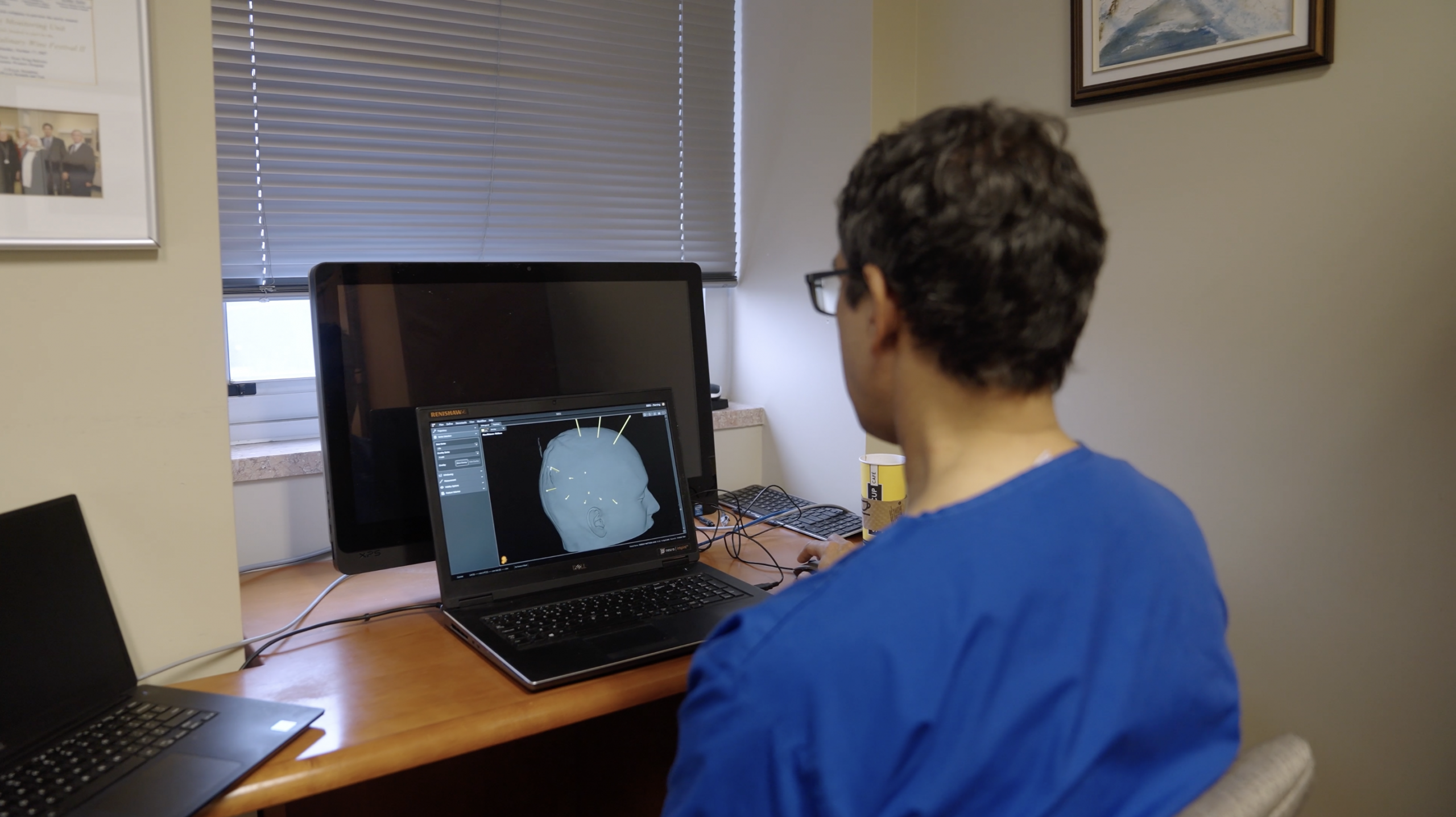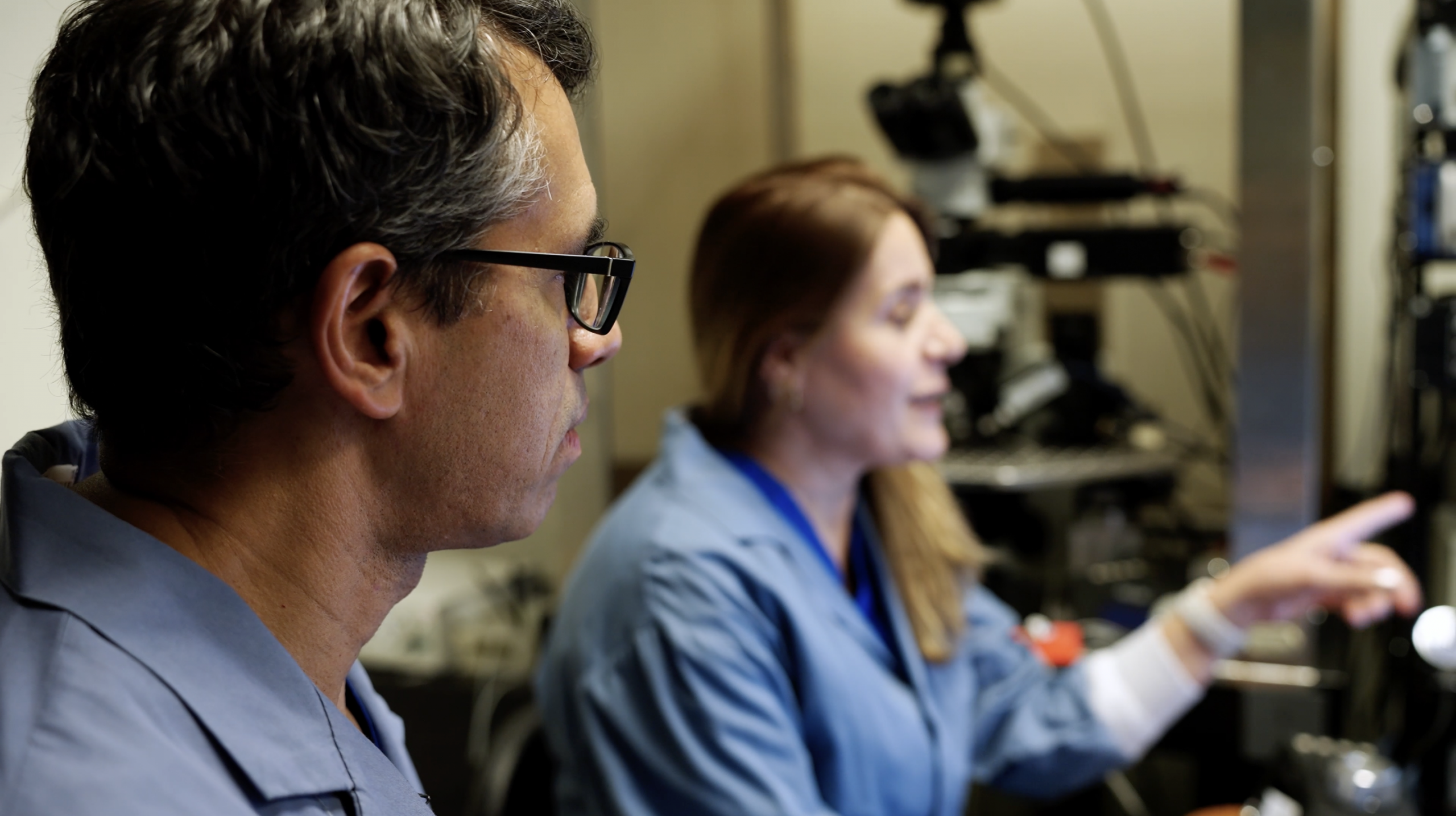RESEARCH THEMES
BRAINS IN THE WILD
Groundbreaking Innovation
This project breaks new ground by studying the human brain in real-world settings, moving beyond stationary environments traditionally used in neuroimaging. A mobile system approved by Health Canada records neural activity, sensory inputs, and physiological states in real-time, allowing for detailed analysis of brain function during daily activities. The SVISE model forecasts brain dynamics and links them to human experiences, offering a groundbreaking method for studying brain function during continuous, natural behaviours.
Clinical and Societal Impact
This project lays the foundation for a new pipeline in neuroscience, shifting the field toward more naturalistic studies of brain function, which will improve both basic research and clinical applications. The findings could lead to personalized treatments for patients with neuropsychiatric disorders, and disorders of cognition like dementia.
Bridging Gaps and Inspiring Future Research
By studying human brains as naturally as animals, this project bridges the gap between animal models and human research, making discoveries more applicable to human health. The interdisciplinary approach could inspire future research across neuroscience, engineering, and psychology, reshaping how we understand cognition and behavior. Insights from this research could lead to advanced treatments for mental health and neurological conditions, potentially enabling home-based, data-driven care for patients.
DEEP BRAIN STIMULATION
Innovative Approach to Alzheimer’s Disease Treatment
Pedunculopontine nucleus (PPN) stimulation has shown promise in improving memory and cognition in Parkinson’s Disease patients, with potential benefits for AD through restoration of gamma oscillations and parvalbumin interneuron activity. Deep brain stimulation on the PPN (DBS-PPN) could be the first disease-modifying treatment for Alzheimer’s Disease (AD), targeting key molecular and cognitive impairments like amyloid beta and tau, offering significant benefits for patients, families, and the healthcare system.

Understanding the Brain’s Language and Memory Processes
Combining advanced laminar array recordings during neurosurgery with pre-operative fMRI and single-cell multiomics analysis, the study focuses on the neural mechanisms in the lateral anterior temporal lobe (ATL) and their role in language and working memory interactions. This will offer unprecedented insights into cognitive flexibility. The research aims to revolutionize the understanding of brain circuits related to language and memory, with broad implications for improving diagnoses and treatments for brain disorders such as epilepsy, dementia, and mental health conditions.
Understanding the Brain’s Language and Memory Processes
Combining advanced laminar array recordings during neurosurgery with pre-operative fMRI and single-cell multiomics analysis, the study focuses on the neural mechanisms in the lateral anterior temporal lobe (ATL) and their role in language and working memory interactions. This will offer unprecedented insights into cognitive flexibility. The research aims to revolutionize the understanding of brain circuits related to language and memory, with broad implications for improving diagnoses and treatments for brain disorders such as epilepsy, dementia, and mental health conditions.
HETEROGENEITY
The Focus on Brain Diversity
The Heterogeneity Project explores how the diversity of brain cells impacts brain function and resilience. At the cellular level, diversity refers to how brain cells respond differently to various inputs, which is central to the project’s research. The project suggests that when brain cell populations are more diverse, the brain is better protected against instability. This diversity is thought to protect the brain from a range of issues, including conditions like autism, schizophrenia, and depression, which involve excessive connectivity and synchronous brain activity.
Epilepsy and Other Disease Implications
The research began with studying patients with epilepsy, hypothesizing that in areas of the brain generating seizures, cells become less diverse and more alike. This discovery was made using sophisticated electrical recordings of brain cells. By emphasizing diversity as a protective mechanism, the project links the concept of brain cell heterogeneity to a wide range of neuropsychiatric conditions. The research aims to explore new treatments and understandings for conditions marked by dysfunctions like epilepsy, autism, and depression.

Revolutionizing Epilepsy Research
The project challenges the long-standing paradigm in epilepsy research (which has remained largely unchanged for over 50 years). By introducing the concept of brain cell diversity, the Heterogeneity Project opens the door to new mechanisms and approaches to treat epilepsy and other conditions.
The KBI’s access to human brain tissue makes this research especially unique. The project’s ability to study the human brain directly sets it apart from other research initiatives, offering promising potential for breakthroughs.
MUSIC AND BRAIN HEALTH
Understanding Music’s Impact on Brain Health
Exploring how both the objective features of music (i.e. rhythm and tempo) and subjective responses (i.e. emotional reactions) affect brain dynamics, brain health, and motor behaviors in neurological conditions, researchers are using cutting-edge techniques like electrophysiology, calcium imaging, and computational models to study the effects of music on brain circuits from the single-cell level to human behaviour.

Unlocking Music’s Therapeutic Potential
Investigating the possibility of using music as a non-invasive, widely accessible therapeutic tool to improve symptoms in neurological conditions—including Parkinson’s disease, epilepsy, and neurodegenerative disorders—researchers are conducting large-scale online experiments to capture the subjective experiences of music listeners. By complementing these findings with objective data, this work aims to pave the way for the development of personalized music therapies.